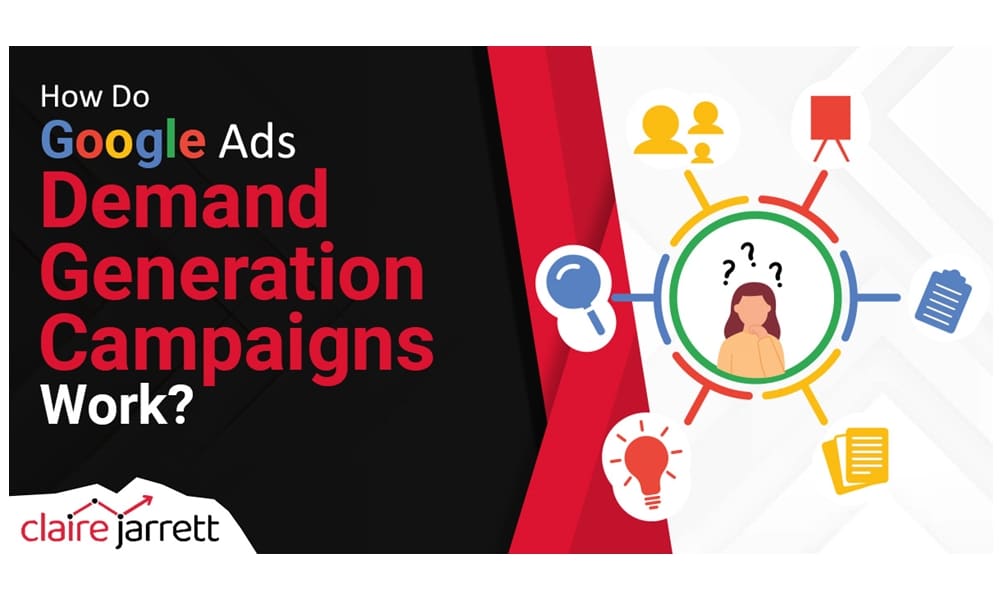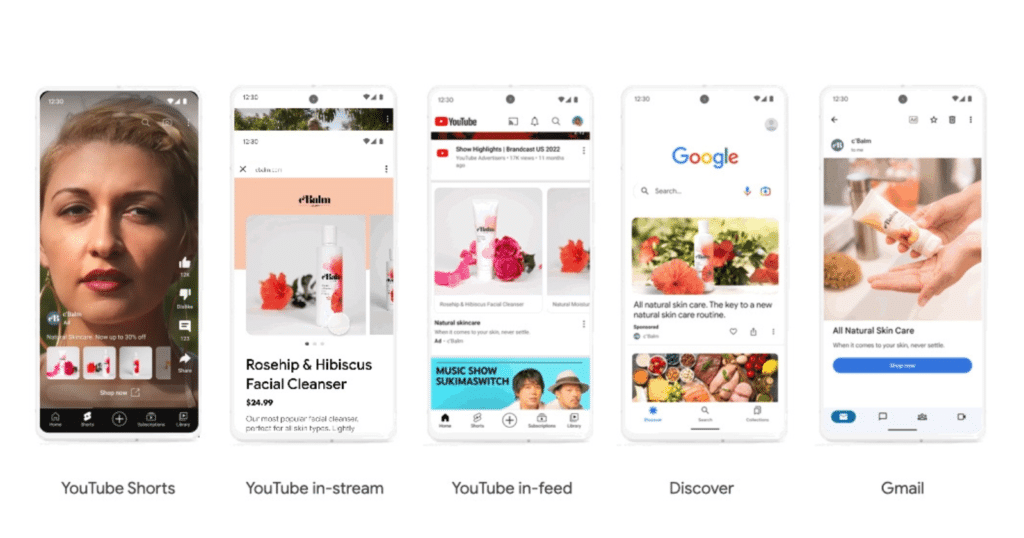How To Set Up Google Ads Demand Generation Campaigns

Last Updated on: 18th April 2025, 05:53 pm
Google Ads has been integrating AI into their ad platforms for many years. But we need to get ready for a particularly big change: Demand Gen campaigns replacing Discovery campaigns.
While I’ve already briefly introduced you to Demand Gen in a previous article, it’s time to help you adapt your advertising strategy. I’ll show you how Demand Gen campaigns are best used, as well as how to migrate your Discovery campaigns to Demand Gen.
Are you ready? Let’s take a look!
What Are Google Ads Demand Generation Campaigns?
Google Ads Demand Gen are AI-powered campaigns. They target top-of-the-funnel leads, i.e., generate demand for your products – not just intercept the search intent, as has been the standard with Google Ads campaigns.
Similarly to Discovery campaigns, Demand Gen campaigns are highly visual, so the channels for your ads will include the following:
- YouTube Shorts
- YouTube In-Stream
- YouTube In-Feed
- Google Discover
- Gmail
- Google Display Network (added in 2025)
- Product feeds & local offers

Audience Targeting with Demand Gen
Now, as a Google Ads coach with 15+ years of experience, I see the power of Demand Gen ads. However, the targeting is still shadowy.
Google will rely on AI and machine learning to generate demand. However, you still have some control with the option to upload your lookalike audiences.
The Lookalike Segments will help you reach leads who share similarities with your existing customer base. It does that by using your first-party data (like customer lists or website interactions) to pinpoint others with similar traits. Then, it browses its massive network to find the leads most likely to be interested in your products or services.
How Are Demand Gen Campaigns Different from Discovery Campaigns?
The key difference is, of course, the move to AI. Demand Gen campaigns have a lot more in common with Performance Max and Smart Campaigns in the sense that both rely on algorithms (and not people).
If you’re a new advertiser, you might think: “That’s fine, Google knows best anyway!”
However, I implore you not to look at Demand Gen’s AI as a silver bullet. You still need to understand your audience. Otherwise, you won’t be able to control how the algorithms are spending your ad budget.
Secondly, as I mentioned, the channels are expanding. Google will push out your campaigns to more channels, as well as offer new ad creation workflows. You’ll be able to use images and video in a single campaign, and A/B test their performance.
The question is – should you do it?
For the time being, I say – no.
When you have granular campaigns, you know exactly which ones work. That won’t be as clear with Demand Gen campaigns. So, if you’re a new advertiser, do things the old way until you have enough data to test your Demand Gen campaigns against.
Thankfully, at least Demand Gen have been updated in 2025 to allow you to choose where your ads will be placed across channels.
Demand Gen campaigns also introduce the option of Maximise clicks bidding, which could be helpful if you’re targeting clicks and not conversions. Again, there are some use cases in which this is common, but it’s almost always better to configure your conversion tracking and ensure you’re seeing the maximum ROAS.
Finally, if you’re an advanced Google Ads advertiser, you’ll be happy to see new reporting: conversion path reports, data-driven attribution, and brand and conversion lift.

How to Migrate to Demand Gen Campaigns on Google Ads
As a New Advertiser
If you’re new to Google Ads, your situation might be tricky – you don’t have historical data to compare Demand Gen performance. Start collecting first-party data as soon as possible, so you get the ability to set up your Demand Gen campaigns with Lookalike Segments.
Why?
Even though Google seems like a vast data machine, it works based on general best practices – not your best practices. As I tell my Google Ads clients, you’re the one with the best knowledge of your audience – their needs, interests, preferences, and the way they explore the internet.
So even though you can’t go granular with Google Ads Demand Gen campaign targeting, you can do the next best thing: give it a list of your previously profitable customers.
If this is not an option for you, then start slow. Double-check everything, including Google’s automated recommendations and AI-generated creatives. If your budget is small, don’t try to cut corners on image and video creation – especially if you’re in a highly visual industry like Google ads for hotels.
Alternatively, consider if you want to be generating demand – or sales. There are plenty of other campaign types that can help you do the latter with lower CPC and quicker results.
Migrating to Demand Gen with Existing Campaigns
If you already have high-performing Discovery campaigns, get the benchmark data and all your assets. Then, understand what worked well and how you can translate it to Demand Gen.
If the Performance Max migration experience taught me anything, then it is that this will be a rocky road. But the earlier you start (and the more data you collect), the better your performance will be in the long term.
Assign a testing budget to Demand Gen campaigns, and be wary of cannibalisation in this migratory period. Demand Gen campaigns will need 4-6 weeks to “learn,” after which you’ll get the clearest insight into whether they will (or will not) work for you.
I also recommend checking Google’s specs and best practices for additional, visual-specific information on how to set up your ads.
What Else Should You Know?
Your Discovery campaign settings, budget, and performance stats should smoothly transition to the new Demand Gen campaigns during the upgrade. Still, grab the backups manually – just in case.
Google’s official daily budget recommendation for Demand Gen campaigns is 15x your Target CPA or 20x your average conversion value. For example, if your target CPA is $10, your daily budget should be $150.
(As I said, if you’re a small business and/or focused on sales, Demand Gen is not for you.)
Get Ready for the Demand Generation!
If you’re exhausting your existing funnel and you’re big enough to shoulder the (testing) cost, Demand Gen might just be a good fit. Remember that stopping the scroll is everything – Demand Gen campaigns “intercept” your leads while they’re going about their usual internet business. You need to earn their attention with engaging product demos, eye-catching carousels, or first-class customer testimonials.
But if you’re at the business stage where you focus on growth, consider a different campaign type. With so many under the Google Ads umbrella, you’ll be spoilt for choice.
If you need a refresher on best practices for testing your ads, as well as how to set up successful Google Ads campaigns from top to bottom, my best-selling Google Ads book is just what you need. Or, you can always contact me directly for personalised advice.






